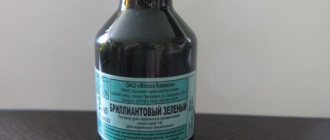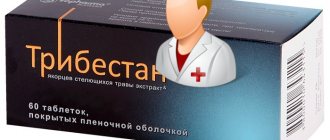Ornidazole is an antibacterial and antiprotozoal drug that helps cope with various infectious and inflammatory diseases of the body.
This drug exhibits pronounced antimicrobial effects against many strains of gram-positive and gram-negative bacteria (staphylococci, streptococci, Helicobacter pylori, etc.).
The drug has effective cytotoxic and bacteriostatic effects, quickly disrupting the processes of cellular respiration of pathogenic microorganisms, while preventing their further growth and reproduction.
After internal administration, it is well absorbed from the gastrointestinal tract, while the main medicinal effect develops within 30-40 minutes. after administration and continues for 6-8 hours.
Main indications for the use of Ornidazole:
- giardiasis;
- infectious diseases of the genitourinary system of the body;
- intestinal and extraintestinal amebiasis;
- urogenital trichomoniasis;
- vaginitis of various origins;
- amoebic dysentery;
- bacterial vaginosis;
- amoebic liver abscess.
Attention: before using this product, it is recommended to consult a physician!
Available in the form of soluble capsules for internal use and vaginal tablets for insertion into the vagina.
Release forms
The drug "Ornidazole" has two main forms. First of all, we mean tablets. They are packaged in blisters of 5 units and in cardboard packs containing two blisters. The tablets are round in shape and white with a yellowish tint. In addition, there is Ornidazole in capsule form. Like the tablets, it has a dosage of 500 mg.
In addition to tablets and capsules, Ornidazole can also be purchased in pharmacies in the form of an infusion solution for intravenous administration. 100 ml of liquid contains 500 mg of active substance. “Ornidazole” in solution is presented in a glass jar with a capacity of 100 ml. This dosage form is used in cases where tablets are not suitable for one reason or another, or when we are talking about a severe form of helminthic infestation.
Use of the drug Ornidazole
Inside, after eating. For trichomoniasis, 500 mg is prescribed 2 times a day (morning and evening) for 5 days. To eliminate the possibility of re-infection, the sexual partner must undergo the same course of treatment. The daily dose for children is 25 mg/kg in 1 dose. For amebiasis, the following treatment regimens are possible: a 3-day course of treatment for patients with amoebic dysentery and a 5-10-day course of treatment for all forms of amebiasis.
Duration of treatment, days | Daily dose | |
Adults and children weighing more than 35 kg | Children weighing up to 35 kg | |
| 3 | 1.5 g once in the evening. For body weight more than 60 kg - 2 g in equal doses in 2 doses (morning and evening) | 40 mg/kg once |
| 5–10 | 1 g in equal doses in 2 doses (morning and evening) | 25 mg/kg once |
For giardiasis, adults and children weighing more than 35 kg are prescribed 1.5 g once in the evening. Children weighing less than 35 kg - 40 mg/kg once. The duration of treatment is 1–2 days. To prevent infections caused by anaerobic bacteria - 1 g 1-2 hours before surgery; after surgery - 500 mg 2 times a day for 3–5 days. It is administered intravenously to adults and children over 12 years of age in a single dose of 0.5–1 g with an interval of 8–12 hours. The daily dose should not exceed 4 g. The course of treatment averages 5–10 days.
The active substance of "Ornidazole" and its pharmacological action
The active substance of the drug is the component of the same name called “ornidazole”. It belongs to the group of 5-nitroimidazole derivatives. Ornidazole is a powerful antibiotic and also has an antiprotozoal effect. In particular, it acts on Giardia and Entamoeba histolytica. In addition, Trichomonas, Gardnerella, anaerobic cocci and other pathogens of infectious diseases are sensitive to it.
When taking tablets or capsules, ornidazole is quickly adsorbed in the intestinal area. Already within three hours after administration, its maximum level is observed in the blood. It is excreted primarily by the kidneys and also by the intestines.
Ornidazole: instructions for use, price, reviews and analogues for giardiasis
Have you been trying to get rid of PARASITES for many years?
Head of the Institute: “You will be amazed at how easy it is to get rid of parasites by taking every day...
Read more "
Ornidazole is a drug that has an active effect on anaerobic bacteria, which can only function in the absence of oxygen, as well as on protozoan microorganisms. Of the protozoa, Giardia, Trichomonas, Gardnerella, mites, ureaplasma, and dysenteric amoeba are sensitive to Ornidazole. The drug has a detrimental effect on fusobacteria, bacteroides, clostridia, anaerobic cocci, and Helicobacter.
- Composition and release form
- Indications for use
- Contraindications
- Side effects
- Dosage for children
- Pregnancy and lactation
- Interaction with other medications
Ornidazole, acting on bacteria, changes their DNA, which subsequently prevents microorganisms from multiplying; the drug also has a toxic effect on microbes, disrupts their respiratory processes, causing death.
The drug is well absorbed by the human body; the active substance Ornidazole is quickly absorbed in the digestive tract. After one to two hours of taking the drug, its maximum concentration can be observed in the patient’s blood, and it penetrates into the cerebrospinal fluid and breast milk. Next, we will consider the instructions for using the drug, its analogues, reviews about it and the price.
Composition and release form
Ornidazole contains the active substance of the same name and is available in the form of white tablets with a slight yellowish tint.
One tablet contains 500 mg of the active ingredient Ornidazole, as well as auxiliary ingredients: lactose, microcrystalline cellulose, povidone, sodium lauryl sulfate, calcium stearate, aerosil, primellose, hypromellose, macrogol 4000, titanium dioxide, talc. One package contains 10 tablets. The drug is also available in the form of capsules, the number of capsules in the package is 10. The solution for intravenous administration of the drug is available in containers of 100 milliliters.
Indications for use
The drug Ornidazole is prescribed for the treatment of infectious diseases caused by pathogenic bacteria and organisms, namely giardiasis, trichomoniasis, amebiasis, bacterial vaginosis, ureaplasmosis, demodicosis.
For prophylactic purposes, the drug is prescribed to prevent postoperative infectious complications that can be caused by anaerobic pathogens.
Contraindications
Ornidazole has the following contraindications:
- Individual intolerance to the components of the drug.
- Organic damage to the nerves of the central system, manifested by diseases such as multiple sclerosis, epilepsy.
- Children under three years of age.
- Lactation period.
With particular caution, the drug is prescribed to elderly patients, patients who have problems with alcohol, hematopoiesis disorders, impaired liver function, as well as to persons whose professional activities involve driving vehicles.
Side effects
Ornidazole must be taken strictly as prescribed by the doctor, since the drug has extensive side effects:
- The patient may experience attacks of nausea and vomiting, stool disturbances, changes in taste, and dry mouth.
- Dizziness, headaches, tremors, drowsiness, fatigue, confusion, and loss of coordination may occur.
- Leukopenia, neutropenia.
- Allergic skin rashes, itching, Quincke's edema.
Instructions for use and dosage
The drug Ornidazole is taken as follows: in the form of tablets, the drug is swallowed and washed down with water, the capsule is taken without opening it. The drug is recommended to be taken after meals, the most suitable time is evening. Equal periods of time must be observed between taking the medicine.
The exact dosage of the drug can only be prescribed by the attending physician, based on the characteristics of each individual case. The specialist must take into account not only the age and nature of the patient’s disease, but also the presence of concomitant diseases and body weight.
Instructions for use of the drug Ornidazole provide a daily dose for adults of 0.5 g to 2 g in one or several doses. The course of treatment with Ornidazole lasts from 5 to 7 days. Also, an Ornidazole tablet can be administered intravaginally, with 1-2 g of the substance per day prescribed, the tablet is inserted into the vagina after the necessary hygienic procedures. When using a solution of the drug for injection, the daily dose for adults is from 0.5 g to 1 g per day. This dosage is divided into three doses with intervals of 8 hours.
For preventive purposes, the dosage of Ornidazole is 500 mg twice a day, immediately before and after surgery.
Dosage for children
Ornidazole can be used to treat infectious diseases in children over the age of three, provided that the child’s body weight exceeds 12 kilograms, otherwise treatment with Ornidazole is contraindicated. As a rule, the drug is prescribed at the rate of 25 milligrams of the substance per kilogram of the child’s body weight. For children weighing up to 35 kilograms, the daily dose can vary from 20 to 40 mg per kilogram of weight.
The duration of treatment depends on the disease that needs to be eliminated. For example, with giardiasis, treatment can last one to two days; with amebiasis, the course of treatment cannot be less than five days.
You will be surprised how many parasites will come out if you drink a glass of regular...
Parasites will leave the body in 3 days! You just need to drink on an empty stomach...
Pregnancy and lactation
Ornidazole is contraindicated in the first three months of pregnancy; in later stages its use is also undesirable, however, the drug can be prescribed to a pregnant woman if the expected effect is many times greater than the risk to the baby.
If there is a need to prescribe a drug during breastfeeding, then breastfeeding is suspended and resumed only after 48 hours.
Interaction with other medications
When taken together with coumarin anticoagulants (drugs that reduce blood clotting), Ornidazole enhances their therapeutic effect. If this simultaneous combination is necessary, then adjust the dose of anticoagulants.
Ornidazole is able to increase the duration of vecuronium bromide, which has a muscle relaxant effect. The activity of acetaldehyde dehydrogenases is not inhibited.
Inducers of microsomal liver enzymes can increase the concentration of Ornidazole when taken simultaneously. At the same time, the concentration of the active substance of the inducers themselves decreases.
Ornidazole for giardiasis
Most often, Ornidazole is prescribed for a disease caused by Giardia - giardiasis. In this case, the drug is taken in fairly high doses. Adults are prescribed 1.5 g of Ornidazole per day, taken after eating in the evening. Ornidazole is also prescribed in the same dose to adolescents, provided that their weight exceeds 35 kilograms. Children up to 35 kilograms are prescribed 40 mg of the drug per kg of body weight per day. The course of treatment lasts one to two days.
Analogs
Ornidazole analogues, which are most often used for giardiasis:
- Ornidazole Vero.
- Gayro.
- Dazolic.
- Ornisid.
- Tiberal.
Reviews
Reviews about the drug Ornidazole can be found mostly positive. Most patients note the high effectiveness of the drug in the treatment of giardiasis, as well as trichomoniasis, bacterial vaginitis, and amoebic dysentery. Reviews from patients indicate a rapid recovery after taking the drug.
Reviews about the drug from other Internet resources:
You can also find negative reviews, as a rule, they are associated with the occurrence of side effects, most often manifested by attacks of nausea. In order to minimize the risk of side effects, you should not self-medicate; you should take the medicine in the dosage prescribed by your doctor.
Drug price
The price of the drug Ornidazole is quite affordable and amounts to 150-280 rubles per package. The price varies depending on the region and the specific pharmacy.
source
There are many medications available for bacterial infections. One of the most inexpensive is Ornidazole; the instructions for using this product are worth considering to make it easier to choose the appropriate treatment method.
Ornidazole is a drug with an antibacterial effect that helps against various infections caused by microorganisms. The main active ingredient of the product is ornidazole. Most often available in tablet form.
The active substance of the drug causes disturbances in the functioning of bacteria, which leads to their further death. The medicine is absorbed quite quickly and in large volumes from the gastrointestinal tract. Ornidazole is effective against most of the most common types of bacterial infections.
The average price of this drug in Russia is 100–200 rubles, depending on the form of release, region and pharmacy chain. Ornidazole is one of the most budget-friendly products of its kind. The drug is released strictly according to prescription.
Antibiotic or not
This drug belongs to the class of antibiotics, so you should not take it without a doctor’s prescription and use it for self-medication.
If used irrationally, antibiotics can cause many side effects, lead to complications for the body and weaken the immune system. At the same time, the medicine effectively suppresses various infections. Here is a list of what Ornidazole treats:
- infections caused by Trichomonas;
- amoebiasis, lesions caused by amoebiasis, dysentery, other diseases caused by this infection;
- giardiasis;
- infections caused by anaerobic bacteria that occur after surgery, as well as prevention of their occurrence.
Before taking the drug, it is important to undergo an examination and take the necessary tests to accurately identify the causative agent of the disease. There are infections that cannot be treated with Ornidazole.
Important! You should visit your doctor before starting to take the medicine.
How to use
This drug should be taken orally, usually after meals, with a small amount of food. The dosage of the medicine depends on the type of disease, the age of the patient and his weight. Ornidazole is usually taken as follows:
- For trichomoniasis - 1.5 mg once, combined with a drug for intravaginal use. Therapy is carried out for five days in two doses, preferably in the morning and in the evening, with the prescription of one intravaginal tablet of 500 mg.
- For amoebic dysentery and other lesions caused by these microorganisms, adults and children weighing more than 35 kg are prescribed 1.5 g once a day. Those weighing over 60 kg - 2 g per day, and children weighing from 12 to 35 kg are prescribed 40 mg per kilogram of weight per day. The course of the drug lasts three days.
- To treat other types of amebiasis, take 0.5 g twice a day for adults and children over twelve years of age. The course of treatment can last from five to ten days.
- For Giardia, 1.5 g per day is prescribed for adults and children weighing more than 35 kg. For children weighing from 12 to 35 kilograms, 40 mg per kilogram of body weight is prescribed. The course of therapy lasts from one to two days.
- To prevent infections caused by anaerobic bacteria, prescribe 0.5–1 g before surgery, after – 0.5 g twice a day for 3–5 days.
Depending on the individual characteristics of the human body and the course of the disease, dosages can be adjusted by the attending physician. You should not independently overestimate or underestimate the amount of the drug indicated in the instructions.
Contraindications
The drug has a number of contraindications, so they should not be ignored, since Ornidazole is an antibiotic and can cause harm to health if used irrationally. Typically, this drug is prohibited for use in the following cases:
- Individual intolerance to the components of the drug, increased sensitivity to the effects of the active substance.
- First trimester of pregnancy and breastfeeding period.
- Children weigh less than twelve kilograms.
People with various diseases of the central nervous system, liver and kidney dysfunctions should take the drug with caution. Ornidazole during breastfeeding may be acceptable if the expected benefits of its use are more noticeable than the possible negative consequences. You may need to stop feeding during the course of the drug.
The use of Ornidazole during pregnancy is always permissible, except for the first trimester. Treatment during pregnancy should be carried out under the supervision of the attending physician, as the medicine should be taken with caution.
Overdose
Cases of overdose are rare; they usually manifest themselves in seizures similar to epileptic conditions, depressive states, various neurological disorders, and neuritis.
In case of an overdose of the drug, symptomatic treatment is required depending on the signs of violation of the correct dosage. If symptoms of intoxication, nausea and digestive disorders appear, gastric lavage should be performed.
Side effects
Side effects are also uncommon. Most often these will be the following manifestations of side effects:
- The occurrence of drowsiness, dizziness, impaired coordination of movements, fatigue, unusual sensory sensations and other disturbances in the functioning of the central nervous system.
- Various digestive disorders, nausea, bloating, abdominal pain.
- The occurrence of allergic reactions, skin rashes, redness, itching.
If side effects occur, you should interrupt the course of the drug and consult your doctor.
Important! During treatment with antibiotics, you should avoid other potent drugs.
Ornidazole and alcohol
You should not combine this drug with drinking alcohol. Antibiotics are potent drugs that have a negative effect on the functioning of the liver and kidneys in general. Concomitant use of alcohol can significantly increase the negative effects.
In general, while taking Ornidazole, you should switch to a lighter diet, avoid fatty, sweet and other foods that can add extra stress to the liver.
Analogs
This drug has direct and indirect analogues that have similar effects on the body, a list of indications and contraindications. However, do not forget that an analogue cannot completely replace the drug itself, so you should approach the choice of medicine wisely. The main analogues of Ornidazole are:
- Lornizole is an antibacterial drug based on ornidazole. It has a similar effect against bacterial infections, but is prohibited for use during lactation and pregnancy. The average price of the drug is 150 rubles.
- Dazolic is an antibacterial agent based on the same active ingredient. Also effective against bacterial infections, helps get rid of giardiasis. Contraindicated during pregnancy and breastfeeding. Requires caution in use for liver diseases. The average price of the drug is 340 rubles.
Regardless of the drug chosen, do not forget about the rules of personal hygiene when treating diseases caused by bacterial and other infections. If you do not follow all the recommendations of specialists, the disease will recur.
In general, Ornidazole is a fairly effective remedy against Giardia and other types of bacterial infections that affect humans. The main advantages of the drug are the possibility of use during pregnancy and breastfeeding and the low cost for drugs of this type.
"Ornidazole": indications for use
The drug "Ornidazole" is one of the best remedies in the fight against giardiasis. It has a destructive effect on parasites at the level of their DNA, which does not give the worms a chance to survive. The drug also shows high effectiveness in the treatment of amoebiasis. This disease is a protozoal infection caused by a parasite called Entamoeba histolytica, better known as dysenteric amoeba. In most cases, it affects the gastrointestinal tract, but extraintestinal amebiasis is often encountered, for example, a brain abscess of amoebic origin.
In addition to its antihelminthic effect, Ornidazole is also used to treat a number of infections: trichomoniasis, demodex, ureaplasmosis, etc.
Side effects of Ornidazole
The drug has a very strong effect on the body. When prescribing it, the attending physician takes into account side effects in order to warn the patient and, if necessary, recommend analogues. The use of Ornidazole-Vero may be accompanied by:
- disturbance of consciousness;
- dizziness;
- convulsions;
- vomiting;
- drowsiness;
- nausea;
- diarrhea;
- tremor of the head and limbs;
- muscle rigidity.
It is necessary to follow the doctor's instructions regarding the dosage of the drug. With long-term use, side effects of Ornidazole cannot be excluded:
- darkening of urine;
- white coating on the tongue;
- impaired coordination of movements;
- headache;
- metallic taste in the mouth;
- skin rashes;
- pain in the abdominal area;
- nerve damage;
- cardiac dysfunction;
- changes in blood composition;
- lack of taste;
- hives;
- Quincke's edema;
- fatigue;
- fatigue;
- constipation;
- skin itching.
"Ornidazole": instructions for use
It is recommended to take the drug "Ornidazole" in tablets or capsules only after consulting a doctor. The dosage is also selected individually. However, there are general recommendations regarding the treatment of helminthic infestations of various types.
- Giardiasis. The adult population, as well as children and adolescents weighing over 35 kg, take 2 tablets or capsules. In this case, we mean the daily dose. If the child’s weight is between 12-35 kg, then the indicated amount should be reduced to 40 mg. In most cases, a course lasting one or two days is enough to completely get rid of parasites.
- Amoebiasis. For amoebiasis dysentery, adults take a maximum of 1.5 mg per day for three days. For children, the dose remains the same as for the treatment of giardiasis. If you have other types of amoebiasis, it is recommended to take half a tablet twice a day. This recommendation applies to both children and adults. The duration of therapy is on average five days.
Solution for infusion "Ornidazole" is used in a hospital setting. The drug administration time is about half an hour. The dosage of the active substance usually corresponds to that recommended when using capsules and tablets.
How to take Ornidazole tablets?
For adults, 1 t. 1-2 r. is prescribed. for the day (morning and evening) after meals, with a sufficient amount of liquid.
The course of treatment and dose of the drug is determined by the attending physician individually for each patient, depending on the severity of the disease and averages 5-7 days.
For children, the drug is prescribed by a pediatrician depending on the child’s body weight, age and specific disease.
Vaginal tablets are used for intravaginal administration deep into the vagina only after preliminary hygienic treatment of the external genitalia, 1 tablet daily before bed for 5-7 days.
Contraindications
"Ornidazole" is contraindicated primarily for those individuals who are allergic to the components of this drug. In particular, the drug should not be used if there is hypersensitivity to nitroimidazole derivatives.
Since it is children who most often suffer from the presence of parasites, Ornidazole is often used in pediatrics. However, it is considered a fairly powerful drug, so this remedy is primarily recommended for use by adult men and women. Therapy for children can be carried out if the child is at least 3 years old and weighs at least 12 kg.
Considering the possible negative effect of Ornidazole on the nervous system, it is not recommended to use it if a person has any organic damage to the central nervous system. The drug should also be prescribed with caution in case of liver disease.
Finished dosage forms ↑
If it is not possible to make honey tampons at home, you can use ready-made medications of this type.
Today they are represented in the field of Chinese medicine. They include a number of medicinal herbs. Reviews of such products indicate sufficient effectiveness of the product.
Many women have appreciated the use of honey products, because they are highly effective and cope with a large number of gynecological problems. For example, the first symptoms of thrush are easily eliminated by using this remedy. In advanced forms of thrush, complex therapy is required. Traditional medicine uses honey for a variety of diseases, and in the female sphere this topic is especially acute. After all, a natural and safe method, with virtually no contraindications or side effects, will always be a priority.
Author: Krasnova Ekaterina
special instructions
Unlike many other drugs for worms, Ornidazole does not have the ability to inhibit the enzyme, which is directly involved in the destruction of compounds of alcohol molecules. However, given the possible negative effect of the active substance of the drug on the liver, it is recommended to refrain from drinking alcohol for the entire period of therapy.
"Ornidazole" and, in particular, its active component, is capable of reacting with other substances contained in medications. Research shows that it interacts with anticoagulants, bromide, and liver enzyme inhibitor drugs. Therefore, the simultaneous use of Ornidazole and other drugs is possible only with the permission of a doctor.
How to properly store the medicine?
Like any other medical drug, Ornidazole requires compliance with certain rules regarding its storage. Firstly, this product can be used inadvertently by a small child, so it must be kept in a place that is out of the reach of children. The air temperature in the room should be no more than 25 degrees. In addition, the storage location must be protected from sunlight. After 24 months from the date of manufacture indicated on the box, the use of the drug is strictly prohibited.









